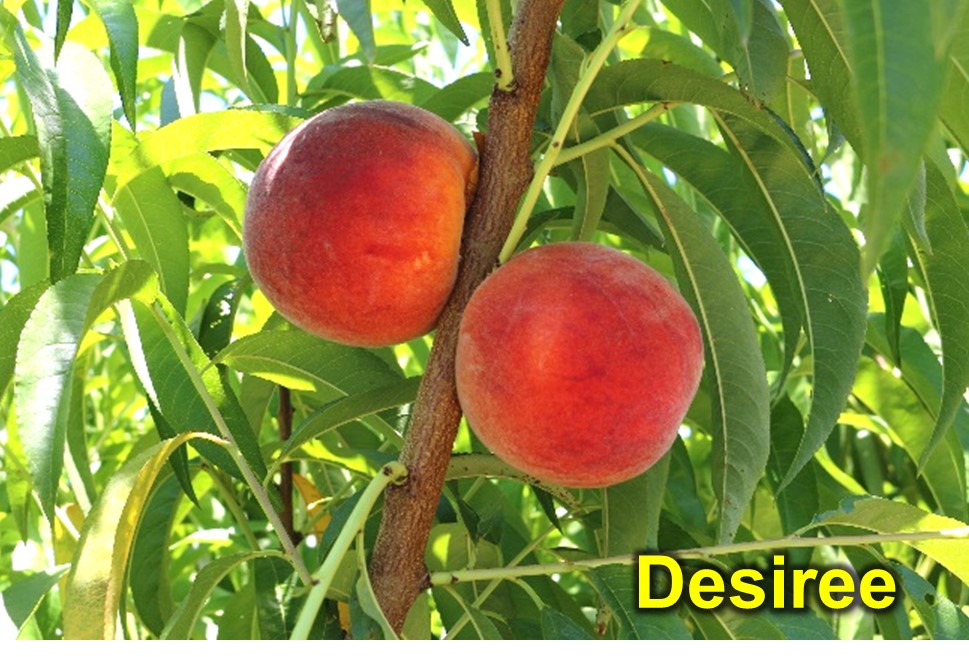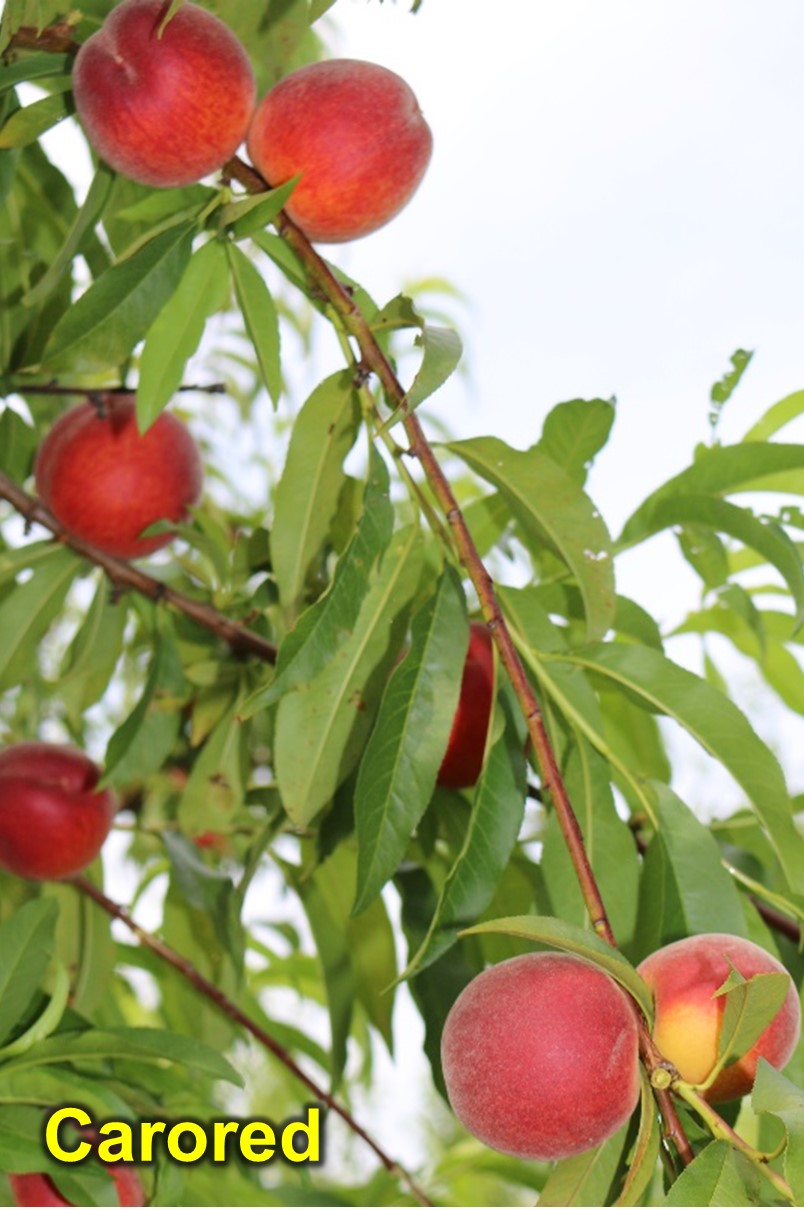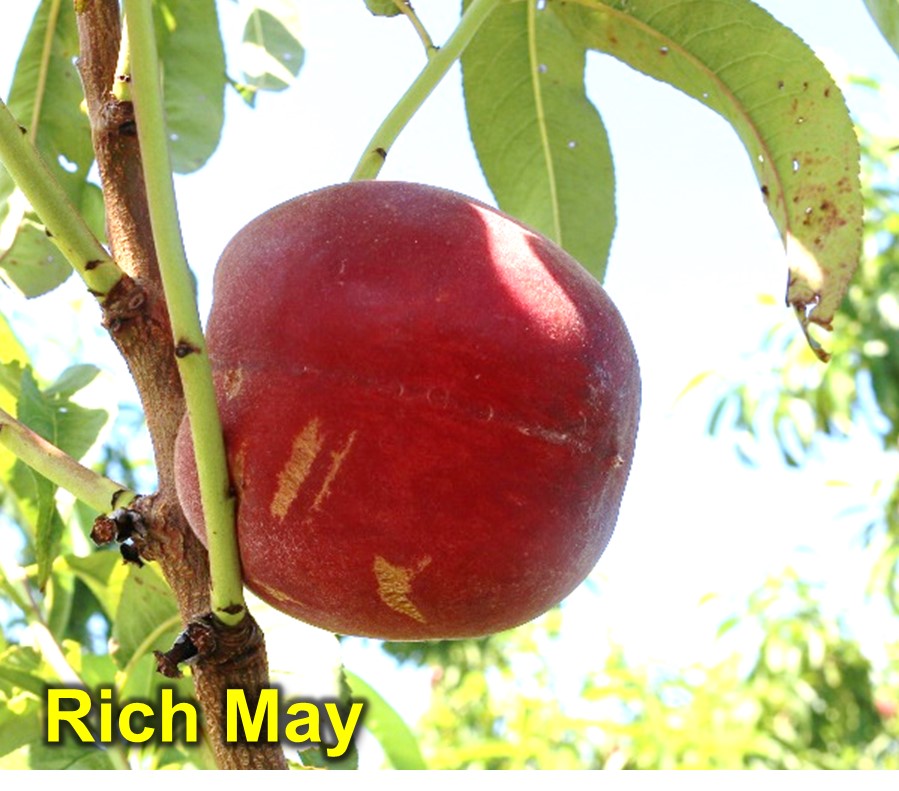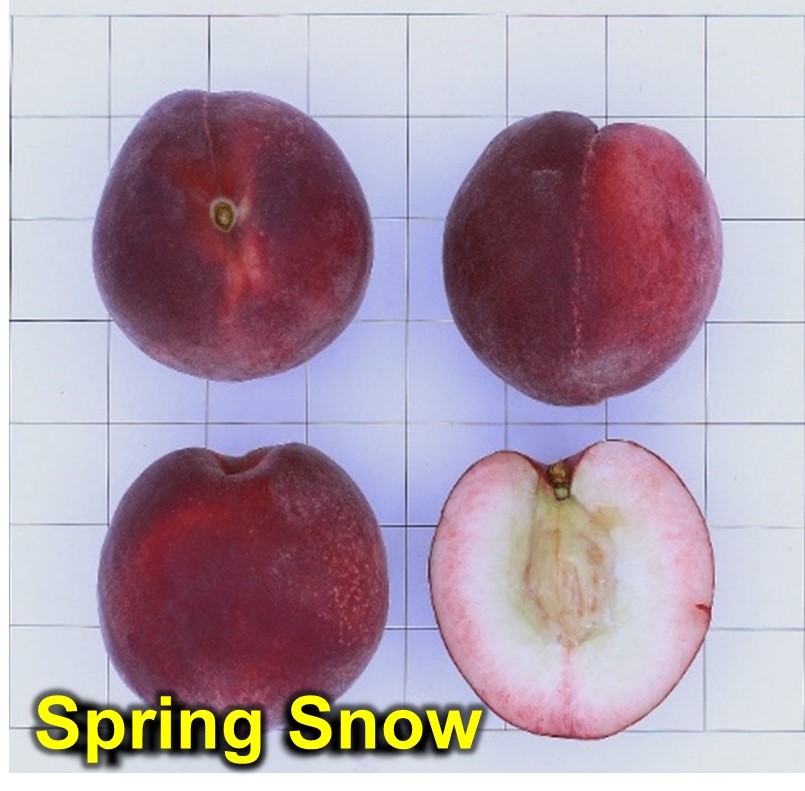 The many peach varieties grown in New Jersey were developed in different breeding programs from several peach-growing regions, including the Rutgers Tree Fruit Breeding program. Recent evaluations have examined the known characteristics and challenges growers face in growing these varieties. These are important for making planting, thinning, harvesting, post-harvest handling, and marketing-related decisions. Understanding these differences is important for selecting varieties or replacing existing ones.
The many peach varieties grown in New Jersey were developed in different breeding programs from several peach-growing regions, including the Rutgers Tree Fruit Breeding program. Recent evaluations have examined the known characteristics and challenges growers face in growing these varieties. These are important for making planting, thinning, harvesting, post-harvest handling, and marketing-related decisions. Understanding these differences is important for selecting varieties or replacing existing ones.
Desiree is a very attractive yellow-fleshed, clingstone peach variety, ripening during the last week of June. The fruit is beautiful and medium to moderately large, which is impressive for the early-season variety. The flesh is firm with a very sweet and tangy flavor. The tree is vigorous, and its leaves have low susceptibility to bacterial spot. The fruit is also having low susceptibility to Bacterial Spot.
Challenges: Though it is the most beautiful peach variety in its season, it has had a light crop in six out of eight years of evaluations, at the frost-prone location at Rutgers Agriculture Research and Extension Center, Bridgeton. It is an early-blooming variety. Site selection is important for Desiree, and if planted in low spots, frost protection measures should be considered. It is also susceptible to a fair amount of pit-splitting, especially among fruits bigger than 2½ inches. Avoid planting Desiree on frost-prone sites; growers should thin fruits carefully, perhaps in two passes, making sure to leave full crops.
 Carored is a beautiful, yellow-fleshed peach, and its excellent, globose shape makes it a good choice. Its taste is traditional, sweet, and tangy. It is a high-yielding variety. The flesh texture is crunchy. It has a distinctive flavor and excellent firmness. On 7/01/22, the Total soluble solids (TSS) were 10.6 Brix, and Total Titratable Acidity (TAA) was 2.70 g/L.
Carored is a beautiful, yellow-fleshed peach, and its excellent, globose shape makes it a good choice. Its taste is traditional, sweet, and tangy. It is a high-yielding variety. The flesh texture is crunchy. It has a distinctive flavor and excellent firmness. On 7/01/22, the Total soluble solids (TSS) were 10.6 Brix, and Total Titratable Acidity (TAA) was 2.70 g/L.
Challenges: Fruit sizing is challenging, but can be overcome by heavy bloom or fruit thinning. Generally, the first pick could be 2½ inches or less, but overall, 80% were 2½ inches, and the remaining were 2¾ inches. During a dry spell, irrigation should not be missed during the final swell, which can severely impact fruit size. Fruit is slightly or moderately susceptible to bacterial spot.
Rich May is one of the earliest yellow-fleshed, productive varieties. It has firm flesh and a sweet, acidic flavor. It has an attractive scarlet red over a yellow-green under color. It’s a clingstone ripening from June 18 -23. If hung longer, it can achieve even higher sweetness, but at the cost of firmness.
Challenges: Fruit is moderately susceptible to bacterial spot, and skin abrasions are an issue; fruit finish can be compromised in some years. The pits are very large. The fruit softens quickly after achieving commercial maturity.
Early Star is a medium to medium-large, globose to slightly ovate peach ripening during late June to early July. The melting flesh has an excellent flavor. However, it is not very firm. Its fruit are moderately susceptible to bacterial spot. The fruit shape is asymmetric, with one side slightly flattened. It can grow bigger than most other early varieties, except Desiree; however, it is early blooming and susceptible to frost damage.
 PF 5B is a firm, yellow-fleshed peach with a greater tendency to split pits than any other peach variety this season. The TSS and TAA on 6/22/22 were 10.6 brix and 2.85 g/L, respectively. Also, it is not a very attractive fruit. In recent years, few growers have pushed out this variety. The biggest challenge is that it is difficult to size. Carored is a better replacement for PF 5 B.
PF 5B is a firm, yellow-fleshed peach with a greater tendency to split pits than any other peach variety this season. The TSS and TAA on 6/22/22 were 10.6 brix and 2.85 g/L, respectively. Also, it is not a very attractive fruit. In recent years, few growers have pushed out this variety. The biggest challenge is that it is difficult to size. Carored is a better replacement for PF 5 B.
There are other good, yellow-fleshed varieties in this season; however, each has challenges in growing under New Jersey conditions. PF-1 lacks flavor compared to other peaches in the season, has soft tips, and gets many split pits. Spring Flame and Sunbright are highly susceptible to bacterial spot; ‘Spring Prince’ is moderately susceptible to bacterial spot; and Queen Crest has cold-tender fruit buds and produces many split pits.
White-fleshed Peaches
Spring Snow produces white-fleshed clingstone fruit of medium size, globose, 70-90% pinkish over cream-white ground color, ripening June 29–July 1. The flesh is firm to very firm with a very sweet and good sub-acid flavor and scattered red in the flesh. The tree is vigorous and moderately productive with medium susceptibility to bacterial spot. This peach will produce split pits and can become mealy when overripe. It is very attractive compared to other white-fleshed peaches during this harvest window. Sweet and Subacid (10.9 brix and 1.48 g/l TTA)
Manon is a medium, globose, 70- 90% pinkish red over cream-white ground color; white-fleshed, clingstone peach ripening towards the end of June. The flesh is firm with a very good, low-acid flavor. The tree is upright, spreading, vigorous, and moderately productive, with low susceptibility to bacterial spot. The flavor and color of this early variety are very good, with medium susceptibility to bacterial spot. Manon always produced a heavy crop; however, it softened faster than Spring Snow.
In summary, each variety offers specific advantages and some challenges. There is no perfect variety; however, knowing the limitations of the site and these characteristics can help in making variety selection and management decisions. Some of these early varieties had a TSS level above 10.5 Brix, close to the industry’s expectation of 11 Brix or higher.

